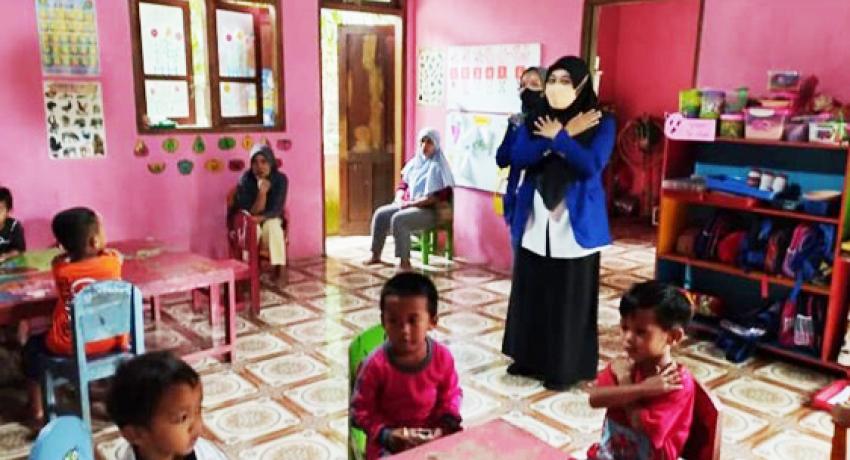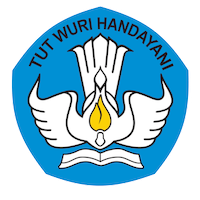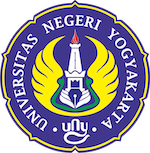Cases of sexual harassment have recently increased and do not recognize age. Children who are not familiar with sex education are vulnerable to becoming victims of sexual violence. Sexual education is often considered taboo, especially for children. When children talk, ask about sex, parents tend to divert the topic of conversation to other things. In terms of mentioning the genitals, which are part of the body, sometimes referred to by other names. Even though the name should not be changed, because when children should be introduced to their real names so that there is no misperception when unwanted things happen. Sex education is very important to be given from an early age where this sex education will provide knowledge for children to know the function of their bodies, understand ethics and social norms, and the consequences of their actions.
This became the concern of UNY students who did community service in Kuroboyo hamlet, Pandak, Bantul by providing sex education for early childhood recently. Based on interviews with school managers, there is no regulation for learning related to sex education, even though it is very much needed. Therefore, sex education is a program that is awaited by the school. According to Anisa Nurul Chusna, the sex education media chosen is child-friendly media that is easy to use, teach, and understand by children. "Adjusting to Preschool children where they at school are still trained in terms of motor skills, so the sex education media chosen is through animated videos," she said. Animated videos were chosen as the media for sex education because from the results of observations at the location, human resources for children at Maju Lancar Preschool, they are still in the stage of learning the names of body parts sometimes confused with one another. The animated video contains the introduction of body parts, the differences between male and female body parts, which body parts can be touched by others, body parts that cannot be touched by others, who can touch our body parts, what to do when our body parts are touched by others without permission.
The sociology education student of the Faculty of Education UNY explained, after seeing the animated video, the children were invited to guess the parts of the body where we held the head, hands, feet, and other body parts then they guessed it. After that, we reflected on the animated video that was watched, asking children which parts of the body could be touched, should not be touched, and so on.
At the kindergarten level, where children are more responsive when spoken to, the media used are songs and dance moves, as well as interactive question and answer using posters as an auxiliary medium to explain. The song is about which parts of the body are allowed to be touched by others, which parts of the body should not be touched by others without permission and what to do when body parts are touched by others without permission. The song is sung with simple dance moves that aim to introduce these body parts such as holding or pointing to the head, hands, feet, chest, genitals, and buttocks.
After singing together, UNY students reflected on the song lyrics by having an interactive dialog with the children, playing guess the body parts with the help of posters to check whether the children understood the body parts. The poster used contains an animated picture of the human body with a description of the name of the body part. There is also an explanation of body parts that can be touched by others with permission and marked (V). Then for body parts that cannot be touched by others without permission are marked (X). As you can imagine, kindergarten children are much more responsive when invited to recognize body parts especially with songs and dance moves as well as interactive questions and answers.
In addition to teaching sex education directly to children, UNY students also provided poster media and animated videos to the school so that in the future the media can be reused in providing sex education to children. The school is greatly helped by this sex education program for early childhood because this program makes children's learning fun, useful, more varied, and interesting.





